
The Best Lock For Your Home: Is Your Lock Really Safe? – Front Range Locksmith
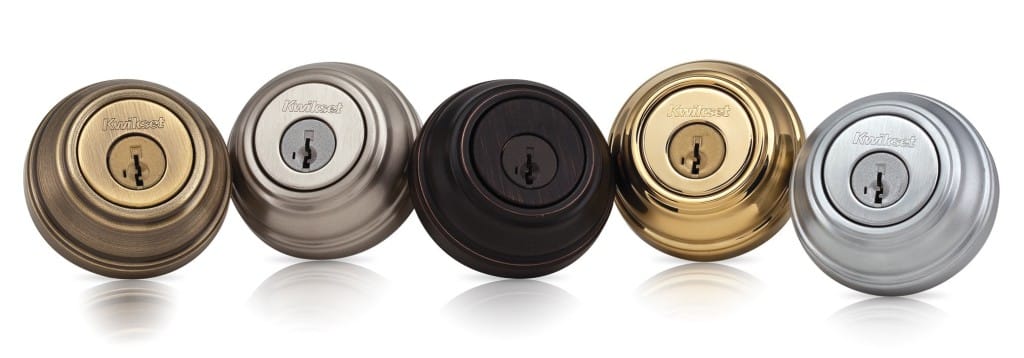
By the time you finish reading this post, about 64 houses will have been broken into in the US alone. This alarming statistic that was recently published by the FBI is a cause for concern, as people increasingly overlook what is essentially the most important line of defense for their home – the lock on their door. In most cases, it doesn’t take James Bond lock-picking skills to break into a house. In fact, in this post I’m going to show you how most house locks can be broken into fairly easily, even by an inexperienced burglar.
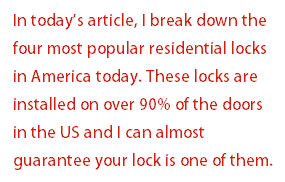
My name is Itay, I’m the owner of Front Range Locksmith, Co-founder of the Locksmith Academy and a professional locksmith with over 10 years of experience.
In today’s article, I break down the four most popular residential locks in America today. These locks are installed on over 90% of the doors in the US and I can almost guarantee your lock is one of them. I’ll be covering each lock in detail, its specs, and most importantly – how secure it really is. Each lock was tested against 5 different attacks to check how hard it is to compromise it in a non-destructive as well as a destructive way. Want to know how your lock performed on the tests? Keep reading.
DISCLAIMER: I’m not affiliated with any company. No one has paid me to write this article. The information you’re about to read is a result of independent testing that I’ve done using my own tools. In this article I’m presenting my opinions only, based on the research that I’ve done. I accept no liability for any consequences of any actions taken on the basis of the information provided.
The Locks I Tested:
When it came to choosing which locks to test, there wasn’t too much thinking needed. Working in different cities and states in the US for the past 6 years, I’ve seen tens of thousands of locks installed in customers’ homes. Surprisingly, just a handful of locks dominate the US market and over 90 percent of all residential locks belong to one of two companies: Kwikset or Schlage. Although Kwikset is a newer and smaller company than Schlage, it seems that it holds a much bigger share in the residential lock market, possibly because of a significantly cheaper price tag. 4 out of every 5 locks that I see on doors today is a standard Kwikset lock and therefore it was the first lock that I tested.
Around 2008 Kwikset launched a new series of locks called “Kwikset SmartKey”. These locks allowed the owner to easily change the lock’s matching key to a new one, in case of a lost key for example, without calling a locksmith. Even though it was released with some serious security flaws, it grew to be one of the most purchased locks on the market today for residential use. Naturally, Kwikset SmartKey was the second lock I tested.
The third lock on the list is the standard Schlage lock which, as I already mentioned, is probably the second most common lock in the US.
The last (but certainly not least) on the list is the Defiant deadbolt. Defiant locks are not nearly as common as the Kwikset or Schlage locks, but it seems that they’re becoming more widespread in recent years.
If you want to jump straight to the conclusion – click here.
Deadbolts vs. Doorknobs:
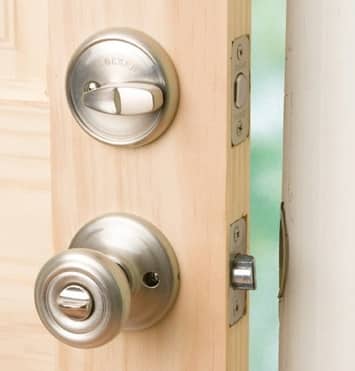
Every lockset usually comes in a package of 2: a deadbolt and a matching doorknob. Due to the nature of the mechanism, a deadbolt will always be more secure than a doorknob. If you’re reading this from home I encourage you to do a simple test: If you have a door with both a deadbolt and a doorknob, open it and then lock both locks while the door is open. Now, try to push the bolt back into the door, and then do the same to the latch of the doorknob. As you probably saw, once the bolt is locked, it cannot be pushed in, whereas the latch can. That’s one of the reasons why a doorknob can sometimes be unlocked with a credit card whereas a deadbolt can’t. Since a doorknob and a deadbolt from the same brand go through the same manufacturing line, it’s safe to assume that their flaws will be roughly the same as well. For that reason, all the locks I tested for this article are deadbolts. Throughout the article I will be using the terms ‘lock’ and ‘deadbolt’ interchangeably.
How I tested:
When trying to compromise a standard deadbolt, there are usually 5 different ways to do it:
1) Picking it – Although it’s not the most common, it’s definitely the most classic way of breaking in. This is usually what you see in TV shows where they magically break into houses in seconds. It involves 2 small tools: one to apply turning pressure on the cylinder, and another to push each tumbler inside until the lock opens.
2) Raking it – This way is very similar to the previous one, but instead of pushing each tumbler individually, there’s a special tool that pushes 2 or more tumblers at the same time, making the process much faster and easier.
3) Bumping it – Bumping a lock is probably the easiest way to compromise a lock. It requires hardly any skill, as long as you have a special kind of key called a bump key. Luckily, these keys are not so easy to get a hold of, but it’s not impossible. These keys can also be made in minutes by altering a regular key. The real danger with bump keys is that anyone can learn how to use them in a few minutes. A set of 2 bump keys, one for Kwikset and one for Schlage, could open 90 percent of the locks in America. Ain’t that scary.
4) Pick Gun – Pick gun is a manual tool that looks like a small gun with a long tip. This is another tool used very commonly by locksmiths to pick locks. Once you insert the tip of the gun into the cylinder in the right way, all you need to do is pull the trigger repeatedly and the lock will unlock in seconds.
5) Drilling it – This method doesn’t need much explaining. For locksmiths, drilling a lock is usually a last resort, taken only when all other ways have failed. However, this is the most common method used by burglars. There are few different ways to drill a lock. Done right, it can overcome any lock in minutes. It’s important to remember there is one major difference between drilling a lock and the rest of the methods I mentioned: Drilling a lock is destructive and will always leave visible damage afterwards. The other methods are non-destructive and therefore you won’t have any way of knowing if someone broke in.
If you want to learn more about how to pick locks for fun and the different lockpicking methods, check out my lockpicking course, it’s great for beginners and it will teach you to master all the methonds I mentioned.
The Test:
Each one of the 4 locks was tested against each one of these attacks. To make sure I didn’t just get lucky, I repeated each attack 3 times in a row (Except for the drilling, which was only done once). For each attempt I measured the time it took to compromise, and eventually calculated the average time for all 3 attempts. For the drilling test, I measured once how long it took from the moment I started until the lock was open.
Keep in mind: the fact that I couldn’t compromise a lock in a certain way, doesn’t mean it’s impossible. I don’t consider myself to be the world’s best lockpicker. However, considering that I pick locks for a living, and have been picking 2-5 locks every day for the past 6 years, it seems logical that if I can’t do it in a reasonable amount of time – the average burglar won’t be able to either.
After testing each deadbolt, and before drilling it, I opened it to see what kind of tumblers are inside. The type of tumblers greatly influences the security of the lock. Some locks are equipped with special type of tumblers called “security pins” and the more of those there are inside of the lock, the harder it is to compromise it in a non-destructive way.
The Results:
Kwikset Standard Deadbolt
The standard Kwikset deadbolt is the most common lock in America. This, or an older version of it, is currently installed on millions of homes all across the country. The results I’m about to share with you here are, to my opinion, alarming.
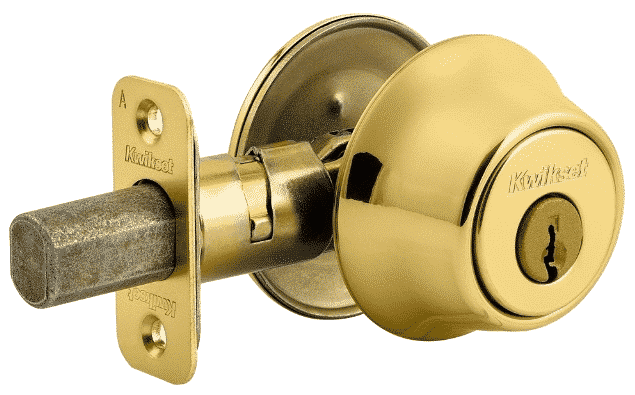
Price: $12.97
Avg Pick time: 07:10 seconds. (Videos 1, 2, 3)
Avg Rake time: 07.70 seconds. (Videos 1, 2, 3)
Avg Bump time: Bumping was not successful.
Avg Pick Gun time: 03.80 seconds. (Videos 1, 2, 3)
Drill time: 02:06:20 Minutes. (It took less than 20 seconds to drill the screws) (Video)
The lock is not equipped with a drill-resistant plate.
Drilling both the cylinder and the screws was incredibly easy.
Security pins: Equipped with 2 security pins. (Spool pins)
This lock was far from being a challenge to compromise in almost every method. The security pins did a good job preventing me from bumping it, but they didn’t do much when I tried any other way. Picking, raking and using a pick gun, all took less than 10 seconds on average. Furthermore, this lock is extremely easy to drill, whether drilling the cylinder or the screws, due to the fact it’s not made with drill resistant material. Overall, this lock seems to provide hardly any security and can be compromised easily with the slightest determination.
Kwikset SmartKey
The Kwikset SmartKey is the younger brother of the standard Kwikset deadbolt. It came out in 2008 and it works in a completely different technology than any other lock on the market. The purpose of this new technology is to allow the owner to easily change its key to a new key, without the hassle of calling a locksmith. Therefore, its interior structure is completely different, making the classic compromise methods useless. Every locksmith knows that whenever they need to unlock a Kwikset SmartKey, there’s no point in trying to pick, rake or bump it, drilling is the only option. When this lock first came out, it had a major security flaw where it could be unlocked easily with a flat-head screwdriver. As my testing showed – this flaw is long gone. Trying to pry it open with a screwdriver actually broke the head of my screwdriver off.
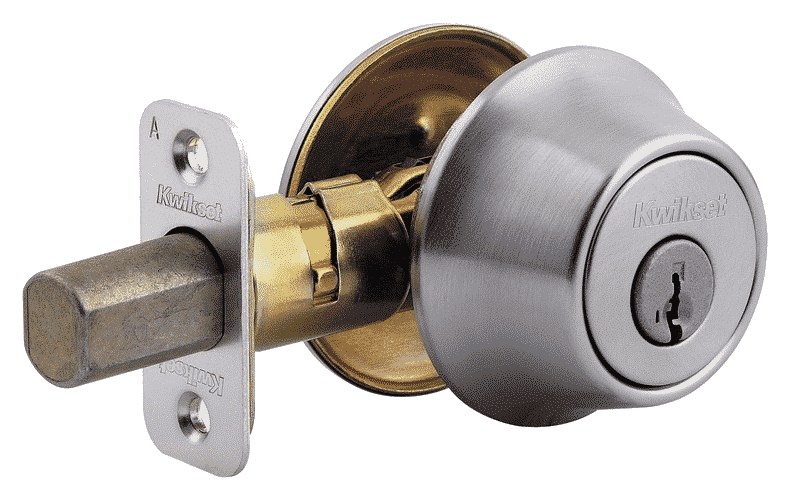
Price: $32.98
Avg Pick time: N/A
Avg Rake time: N/A
Avg Bump time: N/A
Avg Pick Gun time: N/A
Drill time: 11:29:78 Minutes
Although this lock doesn’t have a drill resistant plate, the cylinder was extremely hard to drill. When I tried drilling the screws, I found out they were even harder to drill.
Security pins: Since this is not a classic pin-tumbler lock, it doesn’t have pins at all.
The inherent characteristics of this lock make it secure, just by having a completely different interior mechanism than the classic pin-tumbler lock. None of the classic ways to compromise a lock are even relevant when trying to break this lock open. The old flaws this lock used to have are no longer around (in the newer versions of this lock only), and drilling it open, although definitely possible, is quite a nightmare. Another improvement in the new models is that the screws, which were once easy to drill, are now drill-resistant. Overall this lock performed very well on my series of tests.
Defiant deadbolt
The Defiant deadbolt has a reputation of being one of the lowest quality locks in stores. It also comes with the lowest price tag of less than $10 a deadbolt. I didn’t have many expectations of this lock, but I was actually slightly surprised by the results.
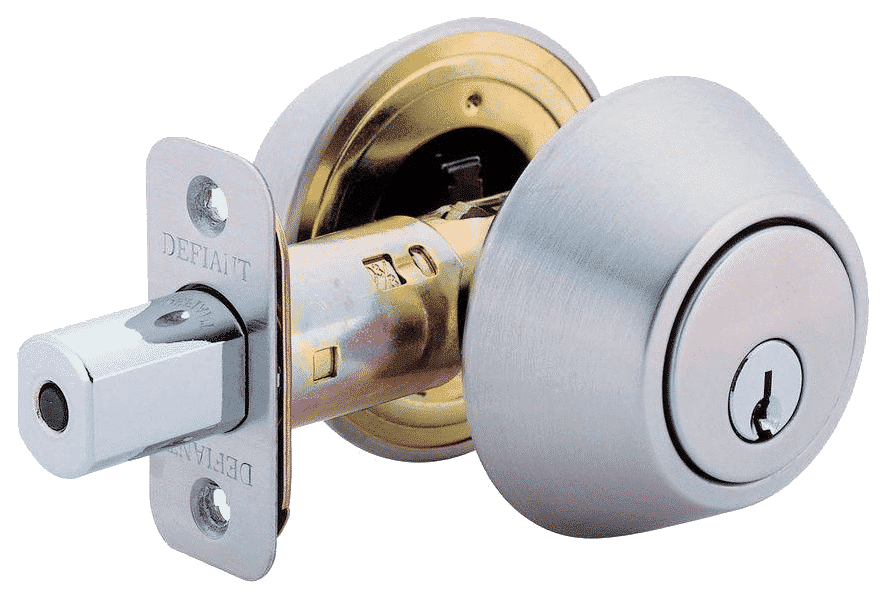
Price: $9.97
Avg Pick time: Picking was not successful.
Avg Rake time: 1:37:10 Minutes.
Avg Bump time: 21:93 Seconds.
Avg Pick Gun time: 33:95 Seconds.
Drill time: 02:29:36 Minutes. (Video)
The lock is equipped with a drill resistant plate, but it’s relatively easy to remove.
Security pins: Equipped with 3 security pins (Spool pins)
I was very surprised to see 3 security pins in the Defiant, which is more than the Kwikset. It also performed better than the Kwikset in almost every test. The security pins made it extremely hard for me to pick and even the raking took much longer than I expected. With drill resistant plate and 3 security pins the Defiant is making big improvements, but with average times all under 2 minutes, it still has a long way to go to be considered a secure lock.
Schlage deadbolt
While notably more expensive than the standard Kwikset and Defiant deadbolts, Schlage locks have a reputation of being of higher quality as well. I was curious to see how well it will do on these tests and whether its reputation is justified or not.
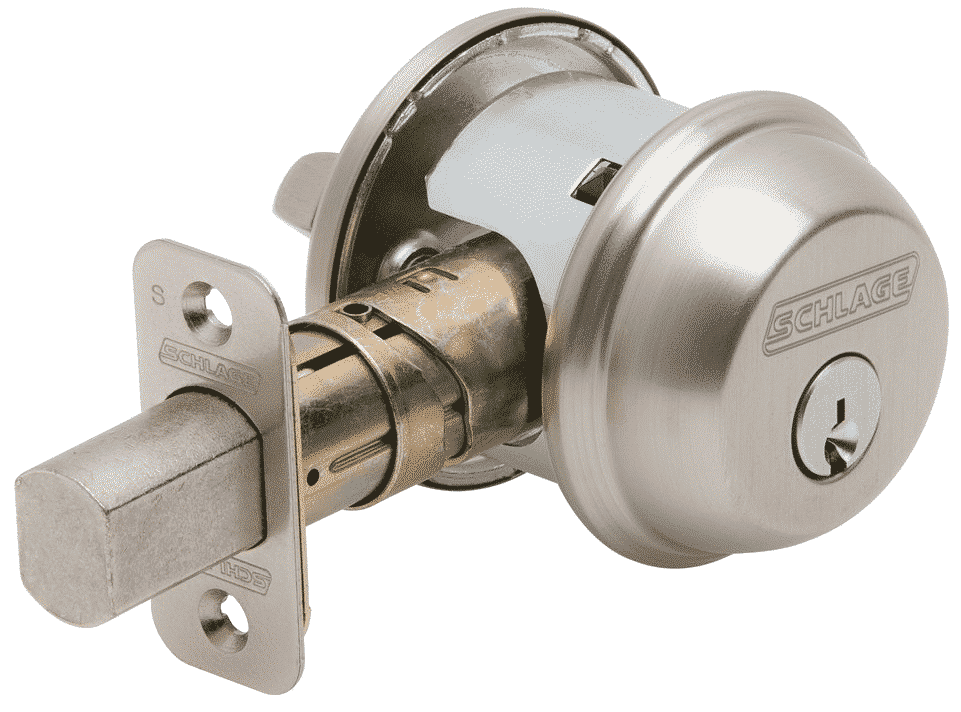
Price: $29.98
Avg Pick time: Picking was not successful.
Avg Rake time: Raking was not successful.
Avg Bump time: 05.15 Seconds. (Videos 1, 2, 3, 4, 5)
It should be mentioned that I tried different bump keys to bump this lock, and I only managed to bump it using one specific key with a particularly big head.
Avg Pick Gun time: Pick Gun was unsuccessful
Drill time: This was the first lock ever I couldn’t drill. The new series of this lock currently in stores is now made from an extremely strong material, which prevents drilling out the screws. The cylinder itself is protected by a drill-resistant plate, which I couldn’t remove nor drill through. I tried drilling this lock a few times and after a total of about 20 minutes of consistent drilling, and 3 cobalt drill bits – I gave up. Amazingly, the lock was still in good enough condition to be unlocked with the original key. Unbelievable. (Video)
Security pins: Equipped with 4 security pins (Spool pins). I speculate that the security pins in this lock have a bigger head than the security pins in the other locks I tested, making it harder to compromise than the others.
Bolt size: The bolt of this lock is slightly bigger and definitely feels sturdier than the bolts of the other locks I tested. Bigger bolts make it potentially harder to kick a locked door open.
After trying for a good couple of hours, the only way I managed to compromise this lock that was quick and consistent, was by using a big head bump key. Schlage definitely did a great job making this lock very secure, especially by protecting it from any sort of destructive attacks in a way I’ve never seen before. However, they failed to protect it from bumping and in fact, even though this lock performed amazingly well on every test, it did worse on the bumping test than any other lock.
High Security Locks:
For those of you who are looking to take their home security to the next level (as far as locks go), my best suggestion would be to upgrade to high-security locks.
High security locks are mechanical locks that have certain modifications in them, making them 100 percent break proof. No one, including the most skilled locksmith can compromise them in any way in a reasonable amount of time. They are pick, rake and bump proof. They are made from much stronger materials and drilling them could take hours. Even the key can only be copied using a special card that comes with the lock.
Most people don’t know they even exist, because they are not sold in most hardware stores so you would have to order them through a locksmith store or the internet, and of course, they come with a higher price tag. Such locks, made by companies like Mul-T-Lock and Medeco, can cost $100-$200 per lock. If you ask me – they are well worth it, especially if you own a house, in which case it would probably be a one-time expense.
People are often worried that having high security locks on their doors will make burglars think they are trying to secure something especially valuable, motivating the burglars to break in. Statistics show it’s actually the opposite – burglars tend to look for the easiest house to break into. Seeing a high security lock will most likely deter them and make them try a different house.
A word on Keypads, Biometric and Bluetooth locks:
As technology progresses, it brings new players to the game of home security. Keypad locks are becoming increasingly more common as well as biometric locks and even bluetooth locks.
These locks, cool as they may seem, sometime give a false impression of being more secure than the classic mechanical pin-tumbler locks. If you take a closer look at these smart locks, you will see that almost all of them are also equipped with an old-fashioned keyhole and a key. The key is used to bypass the electronic system in case of a failure or a drained battery. Rather than making the lock more secure, it actually adds another aspect that can be manipulated and compromised.
While the keypad or biometric feature is usually very hard to bypass, the lock’s weakest link remains the cylinder. In other words – these locks are only as secure as their weakest link. If the cylinder of the lock is easy to compromise, the whole lock is not secure.
Now, don’t get me wrong, I do think these locks bring great advantages with them, like not needing to carry a key and preventing yourself from getting locked out. However, the last thing you want is to spend hundreds of dollars on such a lock and find out that it has severe security flaws. If you decide to switch to a smart lock, do it for reasons of convenience rather than security, and always make sure the cylinder is as secure as the electronic feature. I may write another post comparing some of the more common smart locks in the future.
Conclusion:
If I have to choose one lock to declare as the winner, I would go with the Kwikset SmartKey. Kwikset’s new technology in this lock is proving itself not only to be the most secure, but also giving an added value by allowing you to re-key the lock easily. Only one year ago I would never have recommended this lock. Its cylinder was easy to drill, the screws were even easier, and sometimes you could simply turn it open with a screwdriver. Kwikset has done a great job fixing all these flaws, making it, in my opinion, the best lock on the market for its class. If you already have this lock on your door, and it’s older than a year or two, I would hurry and buy a new one, to make sure you get a lock without the old flaws.
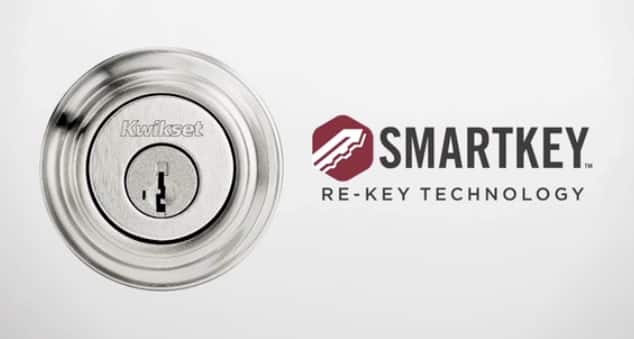
In a close second place, comes the Schlage deadbolt. The new Schlage locks are excellent. The fact they use the classic pin-tumbler technology, and yet I couldn’t pick, rake of use a pick gun to unlock them is quite incredible, but the fact I couldn’t drill them under any circumstances is really unbelievable. When locksmiths can’t compromise a lock in a non-destructive way like picking or raking, they always resort to drilling it. Schlage has taken that option out of the equation. I was able to bump it, but only using a specific bump key, with a big head. Other than that, Schlage still feels sturdier than the rest of the locks and has a bigger bolt, which makes it harder to kick open. Any one of these two locks will be a good choice in my opinion.
The Defiant lock takes the third place on the list. Defiant is definitely making significant improvements along the years. Just a few years ago, it would have never performed better than a standard Kwikset lock. Adding 3 security pins and a drill resistant plate shows that defiant is going in the right direction, while staying the most inexpensive lock you can buy. Still, I can’t recommend it if what you’re looking for is security. Except of picking it, which was for some reason extremely hard, I managed to compromise it in all the other methods in less than 2 minutes.
My biggest disappointment is of course, the standard Kwikset deadbolt. Although they now have 2 security pins, they performed very poorly on most other tests. I couldn’t bump them at all, which is good, but picking and raking them was not even a challenge. Same goes for the pick gun. I don’t know if Kwikset is planning to retire this lock in the near future since the SmartKey is so much better, but I feel like there is no excuse for the most common lock in America to be that easy to compromise. If you have this kind of lock on your door, I strongly suggest considering an upgrade.
Did you find this article helpful? Maybe your friends will find it helpful too!
Click here to share this article on Twitter
Click here to share this article on Facebook
If you have any questions or comments, let me know directly through our Twitter or Facebook page, I read and answer every message.



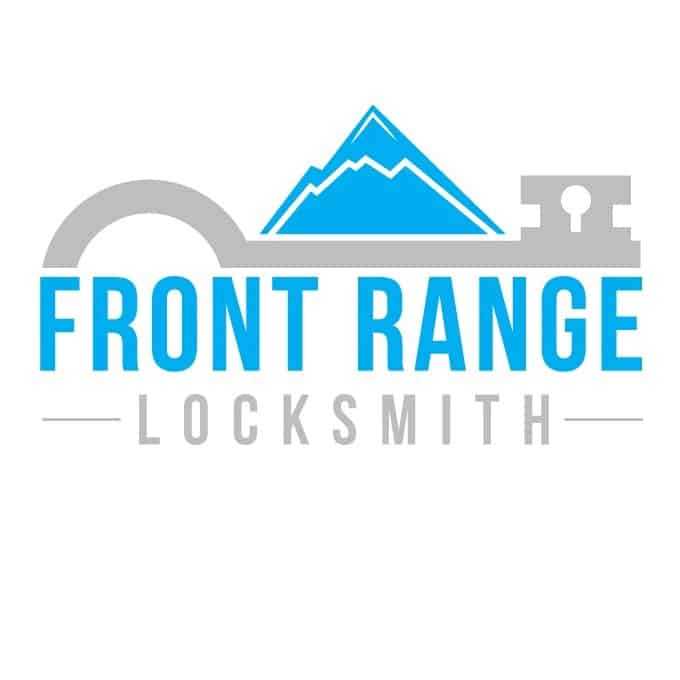





Tonda Cooper
This was amazing for you to share! Thank you so much! I will share with all my family and friends!
But, did you have to show the Fb world how to do it in your videos?
Itay
I’m glad you liked the article!
As for showing the techniques – even though I make it seem real easy in the videos, those techniques actually take time to master. There are many small details that I’m intentionally not explaining, to not give out too much information, and it’s those details that will make up the difference between a successful attack and a failure. Furthermore, some of those tools, like the bump key and the pick gun are not so easy to get for just anyone.
I felt it was important for people to see with their eyes, rather than just read, that most of the locks on our doors are nothing more than an illusion of safety. It’s also important, to give the companies who make these locks a sense of urgency for addressing and correcting these flaws. The more people are aware of it – the more urgent it become to fix.
R.S.
Is there a way to tell if a customer is getting the improved version of the Kwikset Smartkey lock? I was considering the Kwikset 909 SmartCode Electronic Deadbolt. Does Kwikset have mfg. production date codes on their packages?
Thanks.
Itay
Hi R.S.
This would be a question to refer to Kwikset. I’m sure they have a way of marking their products for the latest edition.